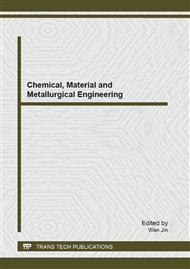p.422
p.428
p.434
p.440
p.444
p.450
p.457
p.462
p.467
Effect of Heat Treatment on Mechanical Properties of General Purpose Stainless Steel Archwire
Abstract:
Stainless steel has been used for orthodontic application and its properties have been continuously improved. The present study compares the mechanical properties of general purpose stainless steel archwire after heat treatment with commercial heat and non-heat treated stainless steel archwires (Highland, USA). The six parameters compared included: 1) maximum strength (MPa) 2) bending modulus (GPa) 3) bending stiffness (N/mm) 4) 0.1 offset bending force (N) 5) 0.2% offset yield strength (MPa) and 6) springback. The temperatures of heat treatment were 200°C, 250°C, 300°C and 350°C at various time duration of 10, 20 and 30 minutes. Fifteen specimens were used for each of the 12 temperature/time settings to evaluate each parameter. An Instron Universal Testing Machine was used for the three-point bend testing and the diameters were measured by a micrometer. Of all 12 settings it was found that for the condition, 300°C at 10 min and 300°C at 20 min the mechanical properties were closest to the commercial (Highland, heat-treated) stainless steel archwire and appropriate for used in clinic.
Info:
Periodical:
Pages:
444-449
Citation:
Online since:
August 2013
Price:
Сopyright:
© 2013 Trans Tech Publications Ltd. All Rights Reserved
Share:
Citation:


